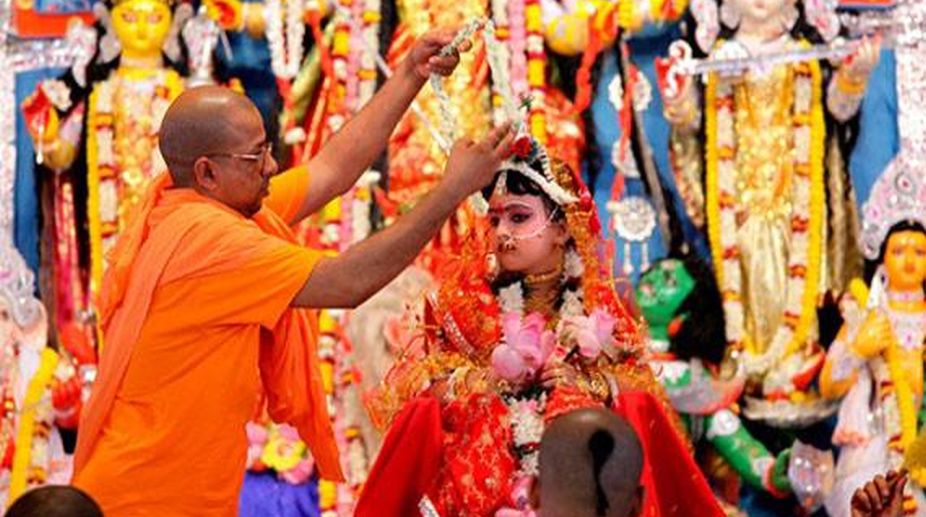Puja club shows the way for unity in diversity with vote for Ma
In a tribute to unity in diversity, India’s unique identity, the club brought together women from the neighbourhood, representing the various religions.

(Photo: Facebook)
Domestic and foreign devotees gathered in thousands at Belur Math, the global headquarters of the Ramakrishna Math and Ramakrishna Mission, for the worship of a pre-pubertine girl as the goddess as Durga Puja celebrations peaked on Mahashtami despite rains in Bengal on Thursday.
A spell of showers in the afternoon sent revellers helter skelter to protect themselves from getting wet, but as soon as the downpour stopped, the carnival fervour was back to its best.
As the day metamorphosed into evening, the city looked like a paradise on earth with neon, halogen, twinkling lights of all hues shining bright, to draw the nattily-dressed youngsters, middle-aged people and the veterans who poured onto the streets in lakhs to go marquee hopping across the metropolis and the near and far-flung districts.
Advertisement
On Mahashtami, the rituals began with Kumari Puja to celebrate the spirit of womanhood.
Belur Math in Howrah district, 10 km from here, saw a huge gathering like previous years.
Kumari Puja was started by Swami Vivekananda in 1901 at the Math to underline the importance of women.
The girl who is worshipped symbolises the power that regulates creation, stability and destruction on Earth.
At dawn, after a ritual bath in the holy waters of the Ganga, the pre-pubertine ‘Kumari’ was wrapped in a red sari and adorned with flowers and jewellery, with a ‘sindur (vermillion) tilak’ on her forehead.
The Kumari fasts until the worship is over. She sits before Goddess Durga’s idol on a decorated chair with priests chanting hymns and dhak (traditional drum) playing in the background.
After the puja, the divinity of the goddess descends into the Kumari, said a priest.
The morning also saw the devout cutting across social and age barriers standing shoulder to shoulder offering ‘anjali’ (floral offerings) to the goddess amid the heavy beats of ‘dhaaks’ (drums), chimes of bells and twinkling ‘diyas’.
Mahashtami (eighth lunar day) formally came to an end late in the evening, and Mahanavami (ninth lunar day) began with Sandhi Puja held at their confluence.
According to Hindu mythology, Goddess Durga killed Chando and Mundo — two asuras (demons) at the confluence (Sandhi) of Mahaashtami and Mahanavami. The Goddess was worshipped as the undefeated – and offered her favourite food items.
As the rituals continued through the day, celebrities – actors, singers, players and writers – mingled with the common people in the marquees in fun and frolic. Matinee idol Prosenjit was seen performing the ‘dhunuchi’ (Indian incense burner used for one of the stages during arti) dance, at south Kolkata’s Hazra Park before hundreds of revellers.
In the central part of the metropolis, hundreds of kids lined up with their parents at the Machua Bazaar community puja marquee to meet and greet Jungle Book characters Mowgli, Balloo, Baghera and others in a ‘forest’.
The five-day carnival is the biggest annual event in this part of the world when even newspapers shut down and roads are choked with human traffic throughout the day and night.
According to Hindu mythology, the festivities and prayers begin with the symbolic arrival of Goddess Durga on the Earth on the sixth day of the first, waxing fortnight of the moon and ends on Dashami or the 10th day, which is celebrated across the country as Dussehra.
Traditionally, every pandal has an idol of Goddess Durga depicting her as slaying the demon Mahishasur. She is shown astride a lion and wielding an array of weapons in her 10 arms.
Advertisement